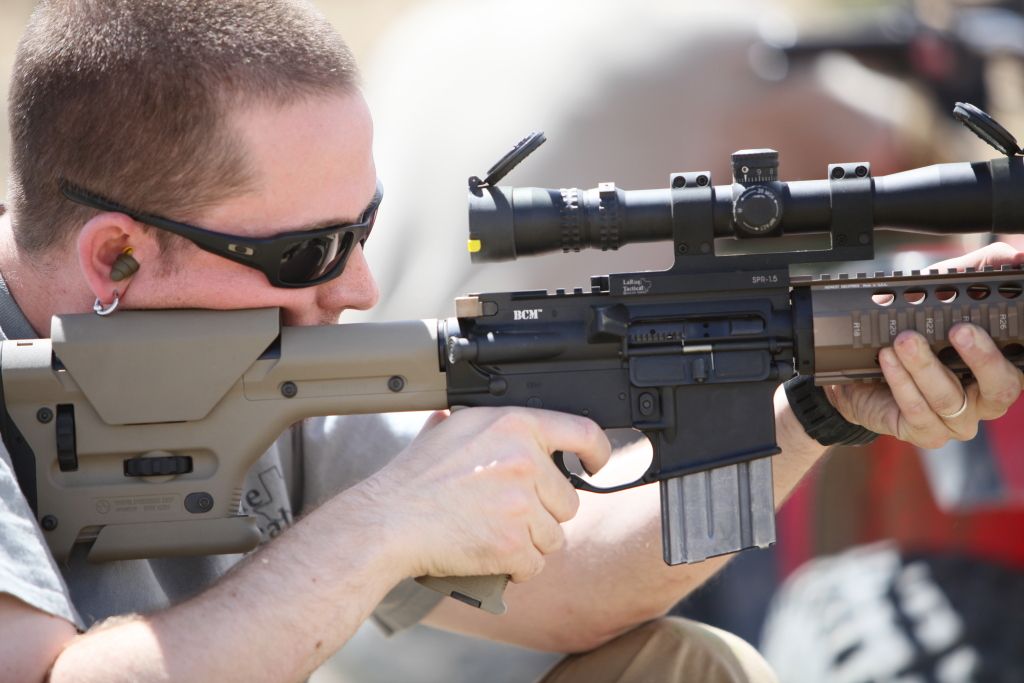Re: tip of finger vs. 2nd joint
As already mentioned, this topic is becoming a perennial favorite on here. This was the one where I chimed in with diagrams and explanations:
http://www.snipershide.com/forum/ubbthreads.php?ubb=showflat&Number=1384996&page=1
And where Lowlight made his video.
There was a question I posed there that was never sufficiently answered, in my opinion, by the most vocal opponents from the other camp (namely Lowlight and 9H). Here it is again:
Every other sport has noticeable variances in how its athletes perform the same tasks, and each excels with what fits. Why do you think shooting is any different? You have sprinters who run like ducks, pitchers who do their own unique windups, boxers with unorthodox stances. I'm sure if you handed a baseball bat to me (average build), Lowlight ("petite"
), and some huge dude, our grips would be different, our swing would be different, our whole form would be different.
After Lowlight's video (which showed a difference in 0.5 MOA between my technique and his), I responded that he only did half of what I explained (finger placement but not hand grip). He answered that he couldn't do what I had shown in the photos because the size of his hands made it impossible for him to do so. I'm tempted to rest my case right there.
My credentials? Nothing out of this world. I consistently hold 0.5 MOA out to 600y (as far as I've tried) with my stock 700P and my humble little 10X Mark 4, shooting factory loads.
But, and this is the key, my belief is held by others who have walked the walk. Sterling is among them. My local coach (who has all the ribbons and NRA designations you could hope for) is also much more of a holistic, make it work for you type of shooter.
What I find amazing is that the orthodoxy guys on here get so absolutely livid and defensive about it, refusing to buy into the idea that perhaps there are different strokes for different folks. Go watch some underwater footage of Olympic swimmers- nobody's fly looks the same, and if you tried to force everyone into one pattern, you'd have a bunch of guys neutering their potential in the name of the "fundamentals" of biophysics.
Frank says "As well, firing a gun is not a natural act, so how can we naturally gravitate to something we weren't designed to do?" With all due respect, that's hogwash. If that were the case, why are new stocks built every year trying to maximize shooters' comfort in a new way? Why do people choose a grip like this:
for their AR over the standard one? You make it seem as if shooting should be an act of penance that you must not be comfortable performing.
I'll say again, you show me a sport that requires any contact with a physical object, and I'll show you as many ways to do it as there are champions.
Finger tip is good for many. It's not an absolute.
Many people on here prefer vertical grip stocks over the curve of traditional hunting ones (like the HS Precision the M24 is built on). If our hands were all built the same, there would have been one identical shape proven most comfortable and that would have been that. But just as you may not shoot as well with one type of stock (some hate AI, for example), so too may others not be as straight back or smooth with your exact finger position. Even Frank changed his placement slightly when moving to the AR in those shots. Heavens no! The master practicing such heresy?
There's one last thing I'll say about this, admittedly sending it into the realm of religious debate
. A true believer in a faith has 1 shot at being right and about 5000 at being wrong. An agnostic merely says "maybe yes, maybe no". All guys like Sterling and I are saying is that for tip placers, it very likely is the best way. But there are others. The purists are saying it's their way or nothing. What's more likely? That tip placement is one successful option, or that everyone not practicing tip placement is wrong? Think about it.









